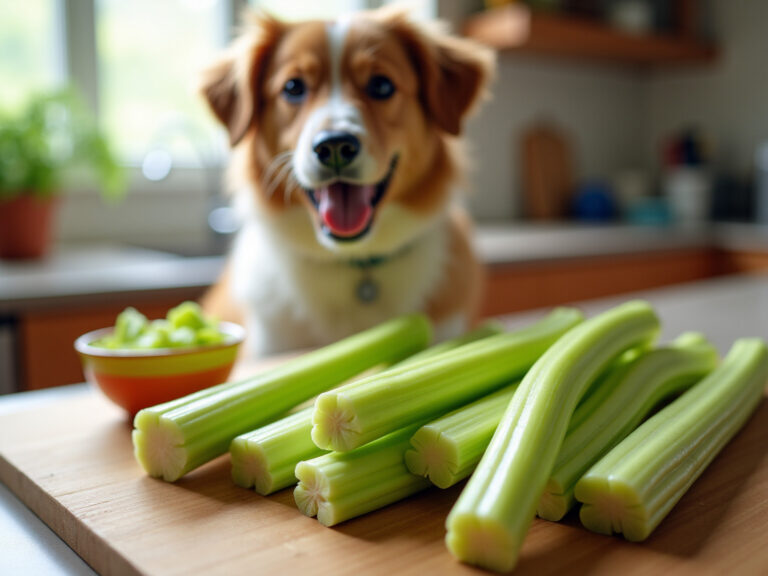Comparative Guide to the Best Dry Cat Food for Indoor Cats
Overview
This article lovingly highlights the journey of finding the best dry cat food for your indoor cats, taking into account their unique nutritional needs. We understand that as a caring pet owner, you want to ensure your furry family members receive the best possible care. To assist you, we delve into essential dietary components and outline key criteria for selecting the right products. Through a thoughtful comparative analysis of leading brands, we ultimately recommend specific options that cater to the health and well-being of your cherished indoor companions.
Introduction
Indoor cats often lead a more sedentary lifestyle compared to their outdoor counterparts, making their dietary needs distinctly unique. With nearly half of indoor felines facing obesity, it’s crucial to select the right dry cat food for their well-being. This article explores the essential nutrients and key criteria that should guide you in choosing the best dry cat food for your furry family members.
As a loving pet owner, what challenges do you face in balancing quality, nutrition, and cost while ensuring your cats remain healthy and happy?
Let’s navigate this journey together, ensuring a nurturing environment for your beloved companions.
Understanding the Nutritional Needs of Indoor Cats
Indoor felines have unique dietary needs compared to their outdoor counterparts, primarily due to their generally lower activity levels. As devoted pet owners, it’s essential to provide a balanced diet that supports their well-being without leading to obesity—a concern affecting a significant number of indoor cats. Did you know that recent studies show approximately 50% of indoor felines are classified as overweight or obese? This statistic highlights the importance of closely monitoring their diets.
Essential nutrients play a vital role in your furry family member’s health. High-quality protein is crucial for muscle maintenance, healthy fats provide energy, and fiber aids in digestion. Additionally, indoor felines benefit greatly from a diet rich in taurine, a vital amino acid that supports heart health and vision. Veterinarians emphasize that taurine is indispensable for indoor cats, as it significantly contributes to their overall health.
Hydration is equally important. Ensuring your cat has access to moisture-rich foods or fresh water is essential for their well-being. Understanding these dietary requirements empowers you to choose the best dry cat food for indoor cats, which fosters a healthy lifestyle for your feline. Research indicates that a well-balanced diet tailored to the specific needs of indoor cats can greatly reduce the risk of obesity and related health issues. By nurturing their dietary needs, you can create a loving environment that promotes their happiness and longevity.

Key Criteria for Selecting Dry Cat Food
When selecting dry cat food, it’s important to consider several key criteria that can significantly impact your furry family member’s health and happiness:
-
Ingredient Quality: Prioritize foods that list real meat as the primary ingredient. Avoid fillers like corn and soy, which offer minimal nutritional benefit. High-quality ingredients are essential for your cat’s well-being. According to AAFCO, adult cat cuisine must contain at least 26% protein and 9% fat on a dry matter basis, ensuring that your beloved companion receives the nutrition they need.
-
Nutritional Balance: Ensure the meals meet AAFCO standards for complete and balanced nutrition. This guarantees that the meal provides all essential nutrients tailored to your cat’s specific life stage and health needs. Remember, the AAFCO minimum for fat in all cat foods is 9%, which is vital for maintaining your cat’s energy levels.
-
Life Stage Suitability: When selecting products, opt for the best dry cat food for indoor cats, considering their age and health. For example, senior cats may benefit from diets enriched with fiber, fish oil, glucosamine, and chondroitin to support joint health and alleviate discomfort.
-
Brand Reputation: Research brands for transparency in their sourcing and manufacturing practices. Brands that control their production facilities often ensure better ingredient quality, which is crucial for providing optimal nutrition for your cherished pet.
-
Palatability: Cats can be quite particular about their food, so it’s essential to select options that are not only nutritious but also appealing to their taste buds. A meal that your cat enjoys will encourage regular eating and enhance their overall well-being. Keep in mind that indoor cats may experience more hairballs due to frequent grooming, making palatability even more important for their digestive health.
-
Price vs. Quality: While premium brands may come with a higher price tag, they typically offer superior nutrition. Investing in the best dry cat food for indoor cats can lead to long-term health benefits and potentially lower veterinary costs over time. As Dr. Jamie Richardson wisely notes, “Moisture-rich options can be highly effective for managing your indoor cat’s weight because they usually contain fewer calories and more moisture than dry varieties.”
By considering these factors, you can create a nurturing environment for your cat that promotes their health and happiness. Your commitment to their well-being is truly commendable.

Comparative Analysis of Leading Dry Cat Food Brands
In this comparative analysis, we thoughtfully explore three leading options for the best dry cat food for indoor cats, understanding the importance of making the right choice for your furry family members.
-
Label A: Known for its high protein content and premium ingredients, Label A offers a delightful range of flavors that appeal to even the most selective cats. While it may come with a higher price tag, many pet owners find comfort in providing the best for their beloved companions.
-
Label B: This brand strikes a balance by offering a nutritious diet at a mid-range price point, focusing on easily digestible components. Although it may not boast all the premium features, Label B stands out as a reliable choice for budget-conscious pet owners who still want the best for their pets.
-
Brand C: As a more budget-friendly option, Brand C utilizes lower-quality ingredients but still meets the basic nutritional needs of healthy cats. While it may not be ideal for felines with specific dietary requirements, it can serve as a suitable choice for pets without sensitivities, ensuring they receive the care they deserve.
As you consider these options, remember that your pet’s well-being is paramount. Each brand offers unique benefits, and finding the best dry cat food for indoor cats can greatly contribute to a happier, healthier life for your cherished companion.

Recommendations for the Best Dry Cat Food for Indoor Cats
As a caring pet owner, you may have concerns about finding the best dry cat food for indoor cats for your feline friends. We understand how important it is to provide them with the best dry cat food for indoor cats to ensure they receive the best nutrition possible. Based on our analysis, here are our top recommendations for dry cat food that can help nurture your furry family members:
- Product A: This option is perfect for felines requiring high protein and top-quality ingredients, ensuring they thrive in a loving home.
- Label B: A balanced choice for those seeking quality without overspending, allowing you to care for your pet without breaking the bank.
- Product C: Appropriate for healthy felines on a budget, though we recommend keeping an eye out for any dietary sensitivities to ensure their well-being.
- Brand D: A holistic option that includes probiotics for digestive health, making it a great choice for cats prone to digestive issues.
Always consult with a veterinarian before making significant changes to your cat’s diet, ensuring you’re making the best choices for their health and happiness.

Conclusion
Providing the best dry cat food for your indoor cats is essential for their health and well-being. By understanding the unique dietary needs of these beloved furry family members, you can make informed choices that help prevent obesity and promote longevity. A balanced diet rich in essential nutrients, including high-quality protein and taurine, is vital for maintaining their overall health.
Throughout this guide, we’ve highlighted key criteria for selecting dry cat food, such as:
- Ingredient quality
- Nutritional balance
- Brand reputation
Our comparative analysis of leading dry cat food brands showcases various options tailored to different budgets and dietary requirements. This ensures that every cat can receive the care they truly deserve. Recommendations for top-rated products emphasize the importance of quality and palatability, catering to even the pickiest eaters among your feline companions.
Ultimately, the health and happiness of your indoor cats rely on your commitment to providing proper nutrition. By prioritizing the best dry cat food options and staying informed about their dietary needs, you can foster a nurturing environment that enhances the quality of life for your furry family members. Taking action today not only supports their immediate health but also contributes to a happier, healthier future for your beloved indoor cats.
Frequently Asked Questions
What are the unique dietary needs of indoor cats compared to outdoor cats?
Indoor cats have unique dietary needs primarily due to their lower activity levels. It is essential to provide a balanced diet that supports their well-being without leading to obesity.
What percentage of indoor cats are classified as overweight or obese?
Approximately 50% of indoor felines are classified as overweight or obese, highlighting the importance of closely monitoring their diets.
What essential nutrients should be included in an indoor cat’s diet?
An indoor cat’s diet should include high-quality protein for muscle maintenance, healthy fats for energy, fiber for digestion, and taurine, which is vital for heart health and vision.
Why is taurine important for indoor cats?
Taurine is an indispensable amino acid for indoor cats as it significantly contributes to their overall health, particularly in supporting heart health and vision.
How important is hydration for indoor cats?
Hydration is crucial for indoor cats. Ensuring they have access to moisture-rich foods or fresh water is essential for their well-being.
How can a well-balanced diet affect the health of indoor cats?
A well-balanced diet tailored to the specific needs of indoor cats can greatly reduce the risk of obesity and related health issues, promoting their happiness and longevity.







